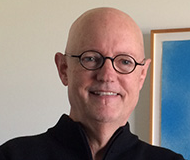Industry Insights
November 9, 2018
Young: Loosey-Goosey
- State: California
- - 0 shares
Over the years I’ve been amazed about the loosey-goosey approach many attorneys have toward the qualified medical evaluator process.

Julius Young
Not sending medical records to the QME at all, sending too many medical records, sending medical records at the last minute, sending undisclosed sub rosa films, sending no cover letter with questions to be addressed, sending massive cover letters, sending records and documents that were not served on the opposing party — I’ve seen it all.
Disputes about when and what is sent to the QME appear to have been rising. Likewise, there appear to be more disputes about the need for replacement panels.
That’s why the recent Workers' Compensation Appeals Board en banc decision in Sandab Suon v. California Dairies is to be welcomed.
Unfortunately, applicant attorneys, defense attorneys and claims examiners are to blame for some of the problems that arise in the QME process.
Sometimes there is a straightforward issue as to whether a prohibited ex parte communication has occurred. In Suon, there was an unresolved issue as to whether the applicant attorney was served with a letter transmitting medical documents to the QME.
More frequently, in my experience, are disputes about what materials (that’s my term; the code uses the terms “information” and “communication”) can be or were sent to the QME.
All too frequently, medical records and non-medical documents (including sub rosa films) are sent by one party to the QME at the last minute so that there often is essentially a small or nonexistent window of time for the opposing party to object.
In Suon, the panel notes that it appears undisputed that defendant did not serve applicant counsel with a medical report 20 days before the report was provided to the QME.
Sometimes these scenarios may be due to gamesmanship. Other times it is simply reflective of the fact that many of the attorneys in the comp community are overworked and struggling to get everything together to get it to the QME in a timely fashion.
Sometimes this noncompliance with the rules is “no harm, no foul.” But in some cases the stakes may be high, and noncompliance with rules can result in a party being “sandbagged.”
In Suon, the WCAB sets up a workable framework for resolving disputes over “information” and “communication” in the QME process. This framework includes emphasis on the Labor Code 4062.3(b) mandate that information be served on the opposing party 20 days before it is provided to the QME.
The WCAB holds that while the parties should make a good-faith effort to resolve issues about what is to be provided to the QME, the trier of fact has the authority to resolve such issues. Moreover, the workers' compensation judge is noted to have “wide discretion to determine the appropriate remedy for a violation of Section 4062.3(b).”
Furthermore, the Suon panel identifies at least (but not limited to) six relevant factors that the trial judge may look at in fashioning an appropriate remedy for violation of 4062.3(b):
- The prejudicial impact versus the probative weight of the information.
- The reasonableness, authenticity and, as appropriate, relevance of the information to determination of the medical issues.
- The timeline of events including: evidence of proper service of the information on the opposing party; attempts, if any, by the offending party to cure the violation; any disputes regarding receipt by the opposing party; and when the opposing party objected to the violation.
- Case-specific factual reasons that justify replacing or keeping the current QME, including the length of time the QME has been on the case.
- Whether there were good-faith efforts by the parties to agree on the information to be provided to the QME.
- The constitutional mandate to “accomplish substantial justice in all cases expeditiously, inexpensively, and without incumbrance of any character” (Cal. Const., art. XIV, § 4.).
Parties who are unhappy with the determination of the WCJ will be able to seek removal to the WCAB. However, it would seem that in light of the wide discretion referenced by the Suon panel, removal attempts are not likely to often succeed.
Julius Young is a claimants' attorney for the Boxer & Gerson law firm in Oakland. This column was reprinted with his permission from his blog, www.workerscompzone.com.
Advertisements
Columns
- Langham: Uniformity in Regulations 04/25/24
- Kamin: Expanding the Good-Faith Personnel Action Defense 04/24/24
- Moore: Reciprocity Adds Authority 04/23/24
- Montgomery: Sedgwick Tries PPO Discount for Med-Legal (Again) 04/19/24
- Kamin: More Policy Exclusions Would Reduce Losses 04/18/24
- Phillips: It's All Settled 04/17/24
- Snyder: Public Benefit Rules Have Changed, but It Might Not Make a Difference 04/12/24
- Headrick: Clearing Up a Common Misconception 04/11/24
- Snyder: Litigation Guidelines Should Define Four Settlement Triggers 04/10/24
- Kirsch: Depositions of Comp Carrier Employees After Intervening in Third-Party Actions 04/09/24
- Wilson and Bennett: Could AI Have Prevented the Opioid Crisis in Workers' Comp? 04/08/24
- Moore: Pandemic Effect Over in March 2027. Really? 04/05/24
- Geaney: A Brief History of Our State's Workers' Compensation Act 04/04/24
- Kamin and Larres: Significant Panel Decision Clarifies Recon Confusion 04/03/24
- Gelman: Exposed to 'Forever Chemicals' 04/02/24
- Montgomery: Cyberattack Delays Payment of San Francisco Bills 04/01/24
- Young: Indoor Heat Regs in Turmoil 03/29/24
- Langham: Shootings and Compensability 03/27/24
- Geaney: Third-Party Liens Not Always Due Right Away 03/26/24
- Larres: State Supreme Court Denies Review of Our Appellate Win 03/25/24
Now Trending
- Workers' Compensation News
-
Calif. DWC
Launches Portal for QME…
Posted on Apr 24, 2024Dr. Ron Perelman says: “The problem is that most QMEs are older docs. Many are semiretired.…”Kimberley J Pryor says: “I had planned to post a well constructed comment, but I stopped…”
-
Calif. Worker Gets
Benefits for Crash Despite Leaving
Job Site Without Employer's…
Posted on Apr 25, 2024
-
Calif. DWC Updates
Time-of-Hire…
Posted on Apr 23, 2024
-
Calif. Committee
Passes Bill to Expand 4850…
Posted on Apr 22, 2024
-
Calif.
Appropriations Committee Places TD
Bills on Suspense…
Posted on Apr 24, 2024
-
Calif. Committee
Passes Bill to Revise Poster…
Posted on Apr 19, 2024
-
Calif. Newsom Says
Indoor Heat Safety Rules Too
Expensive for…
Posted on Apr 25, 2024
-
Neb. Divided
Supreme Court Reinstates
Occupational Disease Claim for…
Posted on Apr 23, 2024
-
Ore. Worker Can
Request Examination if Carrier
Supports Claim Denial With IME…
Posted on Apr 22, 2024
-
Minn. Supreme
Court Upholds Award to Social
Worker for…
Posted on Apr 19, 2024
Jobs
Upcoming Events
May 5-8, 2024
Risk World
Amplify Your Impact There’s no limit to what you can achieve when you join the global risk managem …
May 13-15, 2024
NCCI's Annual Insights Symposi
Join us May 13–15, 2024, for NCCI's Annual Insights Symposium (AIS) 2024, the industry’s premier e …
May 13-14, 2024
CSIA Announces the 2024 Annual
The Board of Managers is excited to announce that the CSIA 2024 Annual Meeting and Educational Con …
Social Media Links
c/o Business Insurance Holdings, Inc.
Greenwich, CT 06836





No Comments
Log in to post a comment